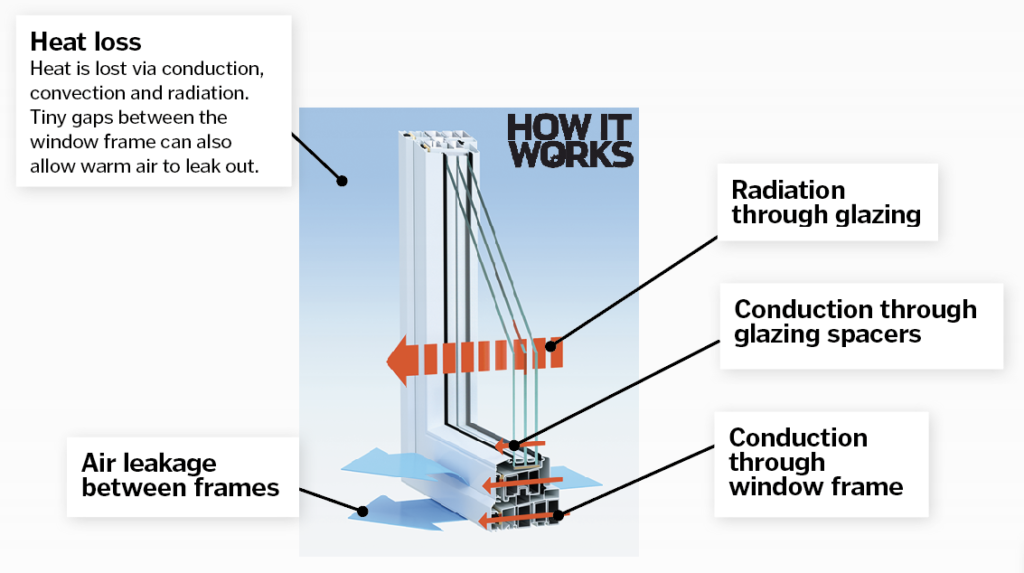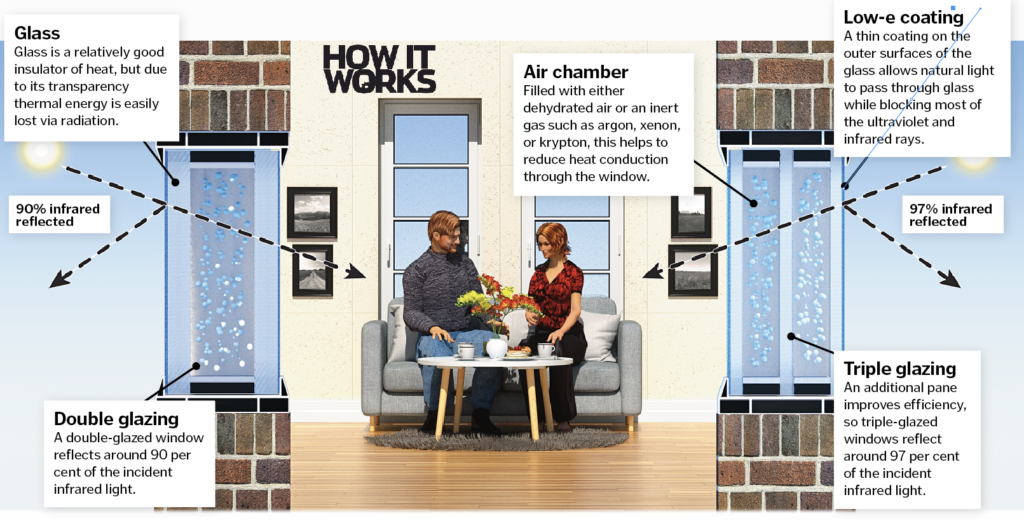How do double glazing and triple glazing compare?
by Ailsa Harvey · 09/11/2019
Find out how glass insulation keeps homes warm throughout winter
Modern double-glazed windows consist of two layers of glass bonded together in one frame, allowing for better insulation and fewer drafts, meaning cheaper heating bills and a quieter home. A single-pane window can transfer heat through conduction, convection and radiation. This is why on a cold day a single pane of glass can feel much colder than the air.
So how are insulating glass windows engineered to reduce the loss of heat from a house? The trick is filling the gap between the panes of glass with air. By providing a blanket of dehydrated air, the rate of heat loss through the window is reduced because air is a poor thermal conductor. Double glazing has been on the market for over 40 years, and triple-pane glass is becoming increasingly popular.
Triple-glazed windows consist of three panes of glass separated by two air chambers. The two external glass surfaces also have a low-e (low emissivity) coating to reflect infrared light. This helps to stop up to 97 per cent of the thermal energy from being transferred across the panes, reflecting the heat instead.
This article was originally published in How It Works issue 105, written by Charlie Evans
For more science and technology articles, pick up the latest copy of How It Works from all good retailers or from our website now. If you have a tablet or smartphone, you can also download the digital version onto your iOS or Android device. To make sure you never miss an issue of How It Works magazine,
Enter our latest competition
More
- Next story How does a desert form?
- Previous story The Human Body: What is a mouth ulcer?






